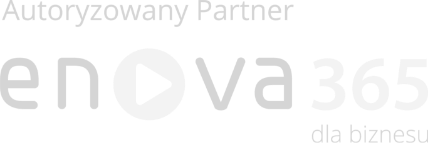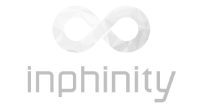How to use HR data to analyze and improve absence and turnover indicators?

Dominika Drabik
Reading time: 9 min
 Date: 11 October 2023
Date: 11 October 2023Nowadays, the competitive business environment is increasingly demanding toward organizations. Companies are compelled to take care of many different aspects simultaneously to meet the requirements. One of the factors that forms an enterprise’s driving force and contributes to achieving success is well-qualified employees. Organizations should, therefore, provide human resources (HR) management as efficiently as possible to keep professionals in the company. HR data analysis is a very precious source of information, allowing to assess KPI indicators, including the absence and rotation of employees. As a consequence, departments can make strategic business decisions influencing to improve company performance.
This article will provide insights into:
- What are rotation and absence indicators.
- How rotation and absence influence the functioning of the company.
- In what way can HR data analysis help prevent too high rotation and absence in the company.
Rotation and absence indicators – definition and formula
The term employee turnover is used to describe the number of people who leave the company in a given period of time. To calculate the turnover rate, a percentage measure of the level of turnover, divide the number of employees who have left by the average number of employees in the company and then multiply it by 100. As a rule, the turnover rate is calculated based on data from the last 12 months.
Percentage turnover rate of employees = (employees who left ÷ average number of employees) x 100
Although there are several types of rotation, it is usually a strongly undesirable phenomenon, and companies strive to keep it as low as possible.
On the other hand, an absence is nothing more than a period when an employee is absent from work and unavailable to the employer. When measuring this indicator, we should be a little more cautious, as it takes into account unpaid leave and sick leave (including those resulting from work accidents), but also long-term absence related to pregnancy and parental leave. When calculating employee absence and taking into account the last factor, we must remember that the result can be quite higher. Most often, the absence rate doesn’t include a leave of absence.
Percentage absence rate = (number of all missed workdays ÷ number of working days [total for all employees]) x 100
If the value of the indicator significantly exceeds the average for the industry or specific positions, it is a sign that there is a problem in the organization, and it is worth considering how to solve it.
Rotation and absence of employees vs. company performance
High turnover of employees and frequent absenteeism (both sick and unannounced) have a tremendous impact on an organization’s performance. Therefore, companies should accurately identify possible reasons for this state of affairs and then make well-considered decisions to minimize the risk of such a situation. Unplanned and prolonged absences and a high number of employees leaving indicate problems that should be diagnosed as soon as possible to avoid unpleasant and often long-lasting consequences for the company. The reasons for employee turnover can vary, so it is crucial in the operation of an organization to constantly monitor, analyze and draw conclusions based on measured indicators.
The latest statistics on absenteeism and turnover rate in Poland should be an additional wake-up call for organizations to take a better look at HR data, analyze it carefully and accurately calculate the employee turnover rate.
As indicated by data presented by the Social Insurance Institution (ZUS), in the first two months of 2023 alone, company’s employees delivered 5.1 million sick leaves. Comparing this to the same period in 2022, there was an increase of as much as 16.1%. While sick leave is an employee’s right, it is also important to remember the other side of the coin, which disrupts the proper operation of the company during periods of increased absence.
According to a survey conducted by Randstad, the average turnover rate of employees in 2022 was 19%. What’s more, the “Labor Market Barometer” report released by Gi Group Holding in 2023 shows that as many as 39.9% of respondents intend to change jobs, which could significantly increase the level of turnover in the market.
Unplanned and prolonged absences of a relatively large number of employees and departures of people from the team are a number of negative consequences for the company. Among the most common are:
- Huge costs. Recruitment processes and implementation of new employees involve several expenses. If such activities have to be repeated frequently, the company is exposed to additional expenditure. Moreover, high turnover also means growing expenses for severance payments and a loss in the form of money invested in training an employee who leaves the organization after a short time. On the other hand, an employee’s absence incurs additional costs, such as outsourcing work to outside organizations or overtime payments to other employees performing extra duties.
- Productivity and efficiency decline. The absence of employees and the period of searching for new people means identifying replacements or assigning tasks to the remaining employees. Staff shortages are associated with an overload of responsibilities, which leads to overloaded and demotivated employees, which could result in less efficient organization of work and even stoppages in the execution of orders.
- Decrease in involvement. Constant team changes could contribute to a lack of a sense of community. Such a situation may contribute to leaving the company’s long-serving employees in search of a more stable job. In addition, constant turnover runs the risk of weakening the company’s image due to negative feedback from departing employees.
HR data analysis as a method used to improvement of rotation and absence indicators
HR departments should regularly and very carefully analyze available data and make regular measurements to reduce turnover rate and absence level among employees in the company, as well as to avoid unpleasant consequences. This will allow them to draw conclusions and make well-considered business decisions. Continuing that strategy is also a competitive advantage because, according to the ‘Barometr na rynku pracy’ report conducted by Gi Group Holding in 2023, 41% of surveyed enterprises declared no specific plans concerning employee turnover prevention.
Smoothly use of HR indicators brings a number of benefits for the whole company. However, an efficient application of available data is frequently a source of problems in Human Resources teams. The lack of or improper usage of available data leads to difficulty in assessing the actual organization’s situation and the effectiveness of the actions taken. In turn, the implementation of best-suited solutions could be hindered. Understanding data analysis’s importance is essential to reach departments and business activity at a new level.
HR data analysis is quite a useful tool for both hard and soft HR because it enables to notice some correlations. Soft HR is responsible for broadly understood human resources management and taking care of professional and social conditions in the company, e.g., career development, motivation, work time analysis, benefits, as well as holidays, absences, recruitment processes, and rotation of employees. Hard HR applies to legal, administrative, and salary issues.
Thorough data analysis and visualization make it possible to distinguish at least a few possible scenarios, where each should be carefully studied before drawing conclusions and implementing specific actions. Analyzing rotation and absence indicators, many potential factors responsible for the high level of those rates could be noticed, e.g., work dissatisfaction, the impossibility of development, inadequate salary, no flexible working time, domination of the older age group, or no home office system. The percentage of satisfied or dissatisfied employees in a company is a general indicator that more and more companies around the world are choosing to measure.
For an analysis to be effective and contribute to making the best decisions, leading to keeping the most valuable employees and staying ahead of the competition, at least a few factors have to arise.
First of all, HR departments need to understand the importance of data analysis and keeping KPIs on the right level in their work. According to the ‘Stan Analityki HR w Polsce’ survey by HR Rebels, we participated in 2023, almost 60% of HR departments base their recommendations on data analysis. It’s an acceptable, but not fully satisfactory, result for the human resources industry.
Under the above report, it can be concluded that management board members and/or supervisory board use HR data the most often in the company – 77.8% of the respondents. Human Resources managers and teams, who usually have the greatest knowledge and experience in human resources management, represent 66.1% of respondents. In the era of paramount analytics importance, HR departments should be key receivers to make the most profitable decisions. According to the “Stan Analityki w Polsce” report, 9% of surveyed organizations don’t use HR data in any way.
Most importantly, enterprises should stop wasting time on manual data processing in outdated programs and use dedicated automated tools for analysis instead.
In our experience, over 40% of the time needed to prepare reports in classical tools, users spend on manual data processing.
Dominik Machalica, Sales BI Department Manager at BPX S.A., HR Rebels „Stan Analityki HR w Polsce”.
Dedicated and automated tools are the answer to problems concerning analyzing a growing number of HR data collected. A real revolution in the market is digitalized Business Intelligence (BI) applications. They are an excellent alternative to standard tools for data visualizations, such as Excel or PowerPoint, because they don’t require manual data processing and offer clear visualizations.
Take advantage of HR automation and boost work efficiency in the human resources management department. Our dedicated HR Vizion Pro tool helps in gathering HR data in one place and creating easy-to-read visuals. You can adapt analysis to your needs thanks to generating personalized dashboards, charts, and reports. Through a few clicks, you gain full insight into HR data and make the best business decisions for your company.
The new era is coming – HR digitization!
Using HR Vizion Pro, you will solve many problems, among others, you cope with too high turnover rate and the absence of employees. Due to constant access to up-to-date data, e.g., numbers of employees who join and leave the company, expected absences including positions and skills, and average working time for a particular job, you can plan and implement effective solutions at the right time. Achieving a low turnover rate brings with it a number of benefits in terms of reducing the number of reasons for employees to leave, the cost of turnover or reducing the unavailability of employees to the organization at key moments.
But that’s not all! HR Vizion Pro equals no more boring spreadsheets and wasting time on manual data processing. With our BI system, you gain full control over data and the form of its presentation. Focus on priorities and take care of your employees’ well-being. We’ll do the rest of the work for you.
If you want to take full advantage of Business Intelligence systems’ possibilities, contact us today! Our experts help you start a journey with those tools and become a part of enterprises that achieve success as a result of effectively using data.
Source:
The „Stan Analityki HR w Polsce. Na podstawie IV edycji Badania Analityki HR” report, 2023, HR Rebels
https://tomhrm.com/wskazniki-hr/wskaznik-absencji-pracownikow-wzor/
https://raportplacowy.pl/blog/o-czym-warto-pamietac-gdy-badamy-poziom-absencji-w-firmie/
See recent writings
You drive us to strive for excellence in delivered projects and common challenges. Feel invited to read out blog that provides more in-depth knowledge on our implementations and experience. Read articles about digital business transformation, ERP and Business Intelligence systems. Discover interesting practical applications for future technologies.
- Blog
Navigating the challenges of introducing new software in a company – the role of technology and social dynamics
Contact us!
Let’s talk! Are you interested in our solutions? Our experts are happy to answer all of your questions.
 pl
pl

















